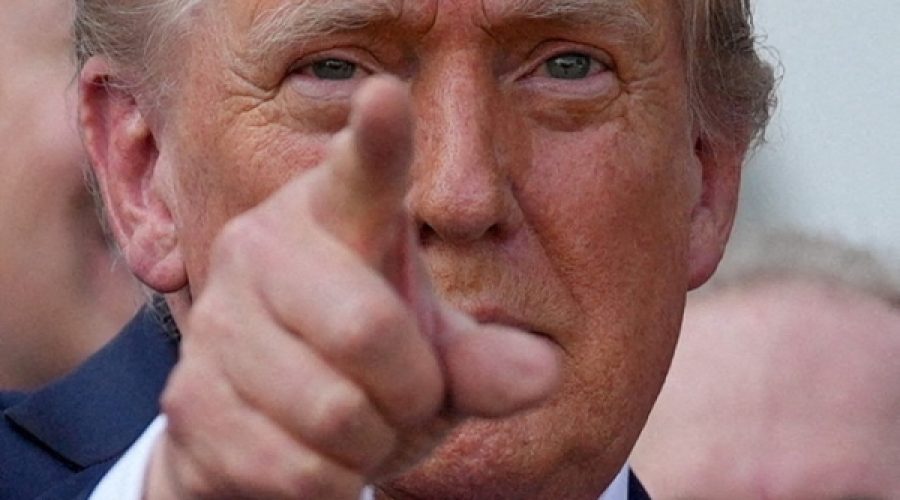Trump’s Higher Tariffs Impact Major US Trading Partners: What It Means for Global Trade and Investment Opportunities
U.S. Trade Partners Struggle as Trump’s Higher Tariffs Take Effect
On Thursday, U.S. trade partners including Switzerland, Brazil, and India faced intensified challenges as President Donald Trump’s increased tariffs on imports from dozens of countries came into force. These new rates have pushed the average U.S. import duty to its highest level in a century.
Starting at 12:01 a.m. EDT (0401 GMT), the U.S. Customs and Border Protection began enforcing tariffs ranging from 10% to 50%, following weeks of suspense over Trump’s final tariff decisions and urgent negotiations by major trading partners seeking reductions.
Leaders of Brazil and India remain steadfast against Trump’s tough stance, despite their negotiators’ efforts to secure relief from the steepest tariff rates. These new tariffs will test Trump’s strategy to reduce U.S. trade deficits without severely disrupting global supply chains, triggering inflation, or provoking harsh retaliatory measures.
Since unveiling his "Liberation Day" tariffs in April, Trump has frequently adjusted the plan, imposing particularly high rates such as 50% on Brazilian imports, 39% on Swiss goods, 35% on Canadian products, and 25% on Indian items. On Wednesday, he announced an additional 25% tariff on Indian goods to be implemented in 21 days, citing India’s purchases of Russian oil.
On the eve of the tariff enforcement, Trump declared via Truth Social, "RECIPROCAL TARIFFS TAKE EFFECT AT MIDNIGHT TONIGHT! BILLIONS OF DOLLARS, LARGELY FROM COUNTRIES THAT HAVE TAKEN ADVANTAGE OF THE UNITED STATES FOR MANY YEARS, WILL START FLOWING INTO THE USA. THE ONLY THING THAT CAN STOP AMERICA’S GREATNESS WOULD BE A RADICAL LEFT COURT THAT WANTS TO SEE OUR COUNTRY FAIL!" It is important to note that tariffs ultimately increase costs for both importing companies and consumers.
Eight major U.S. trade partners, representing approximately 40% of U.S. trade, have reached framework agreements to reduce their tariff rates to 15%. These include the European Union, Japan, and South Korea. Britain secured a 10% rate, while Vietnam, Indonesia, Pakistan, and the Philippines negotiated reductions to 19% or 20%.
William Reinsch, a senior fellow and trade expert at the Center for Strategic and International Studies, noted that for these countries “it’s less-bad news.” He added, “There will be some supply chain rearrangement and a new equilibrium. Prices in the U.S. will rise, but it will take time to fully materialize.” Countries facing very high tariffs like India and Canada are expected to continue seeking concessions.
Switzerland’s government scheduled an emergency meeting following President Karin Keller-Sutter’s unsuccessful last-minute trip to Washington aimed at averting the damaging tariffs on Swiss goods.
South Africa’s attempts to negotiate a tariff reduction also failed, despite recent talks between President Cyril Ramaphosa and Trump. Both nations plan to continue discussions. Brazil’s President Luiz Inácio Lula da Silva stated he would not resort to a phone call with Trump but will pursue cabinet-level talks to lower the 50% tariff on Brazilian exports. India’s Prime Minister Narendra Modi similarly refused to compromise on the interests of Indian farmers despite the steep tariff increase.
Trump’s order includes a provision that any goods found to have been transshipped through third countries to evade tariffs will face an additional 40% duty. However, few details have been provided on enforcement measures.
The U.S. tariff strategy also incorporates national security-based tariffs on sectors including semiconductors, pharmaceuticals, automobiles, steel, aluminum, copper, and lumber, with some microchip tariffs potentially reaching 100%.
China remains on a separate tariff track, with a possible increase scheduled for August 12 unless Trump extends a prior truce following recent talks in Sweden. The president has indicated possible additional tariffs related to China’s purchases of Russian oil, part of efforts to pressure Moscow over the Ukraine conflict.
Tariff revenues are expected to significantly boost federal income, with U.S. Treasury Secretary Scott Bessent projecting collections could exceed $300 billion annually.
These measures elevate average U.S. tariff rates to about 20%, the highest in a century, up from 2.5% when Trump assumed office. Recent Commerce Department data reveals that tariffs are already contributing to price increases in multiple categories, including home furnishings, durable household equipment, recreational goods, and motor vehicles.
The financial impact is widespread, affecting major corporations such as Caterpillar, Marriott, Molson Coors, and Yum Brands. Toyota, for example, announced it anticipates a nearly $10 billion loss due to tariffs on cars imported into the U.S., prompting a 16% cut in its full-year profit forecast.
Special Analysis by Omanet | Navigate Oman’s Market
The sharp increase in U.S. tariffs, hitting the highest levels in a century, signals a disruptive shift in global trade dynamics that Omani businesses must monitor closely. Opportunities lie in supply chain diversification and export market recalibration, especially for exporters targeting U.S. markets, while risks include rising input costs and potential retaliatory tariffs that could affect Omani imports. Smart investors and entrepreneurs should proactively assess trade exposure and seek strategic partnerships in less tariff-impacted regions to safeguard growth amid growing international trade tensions.



